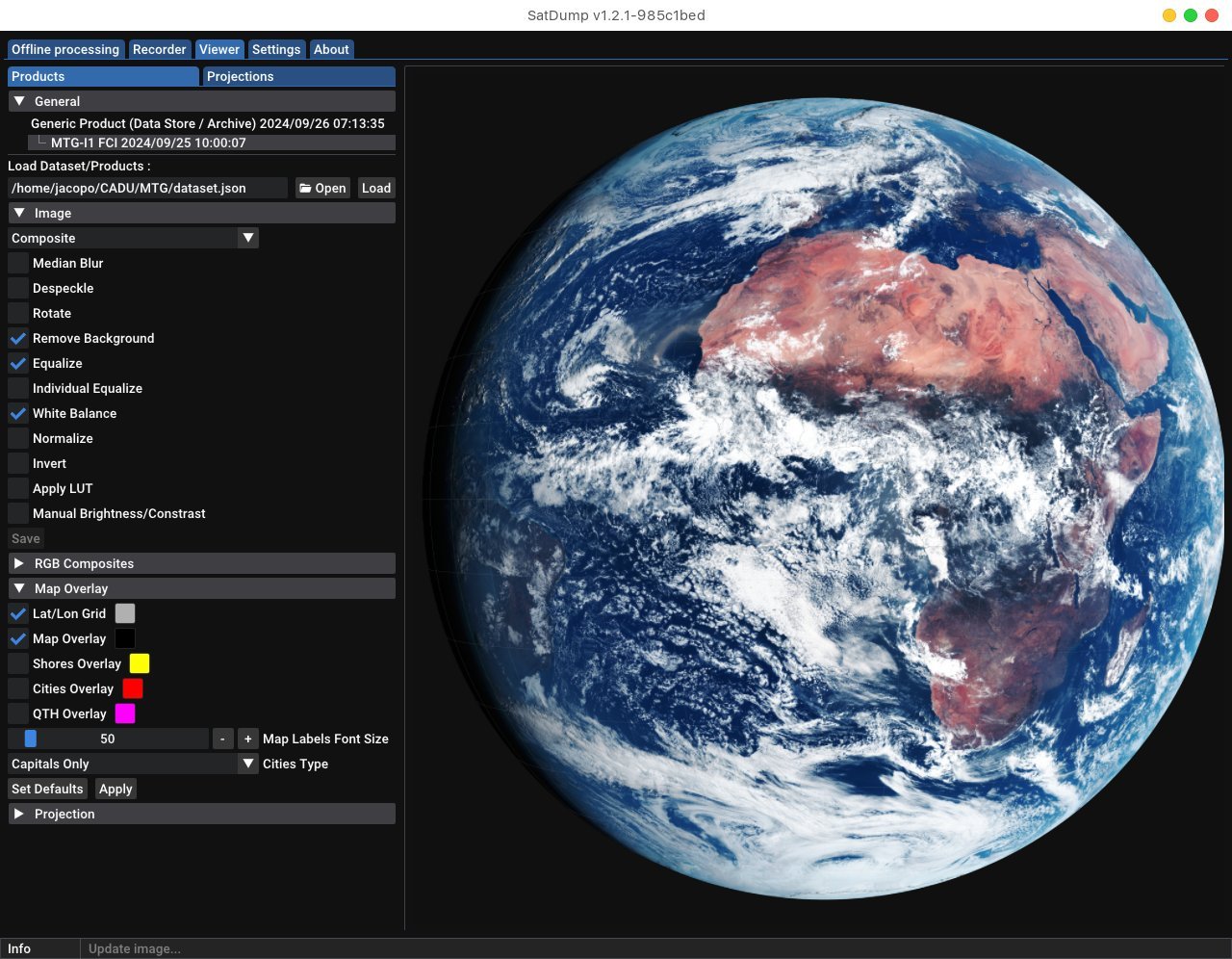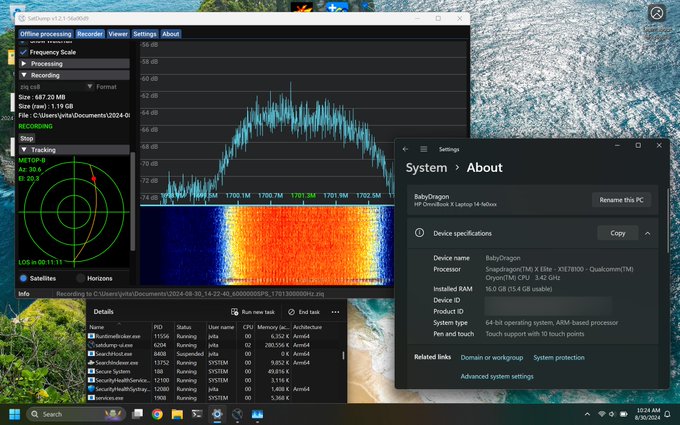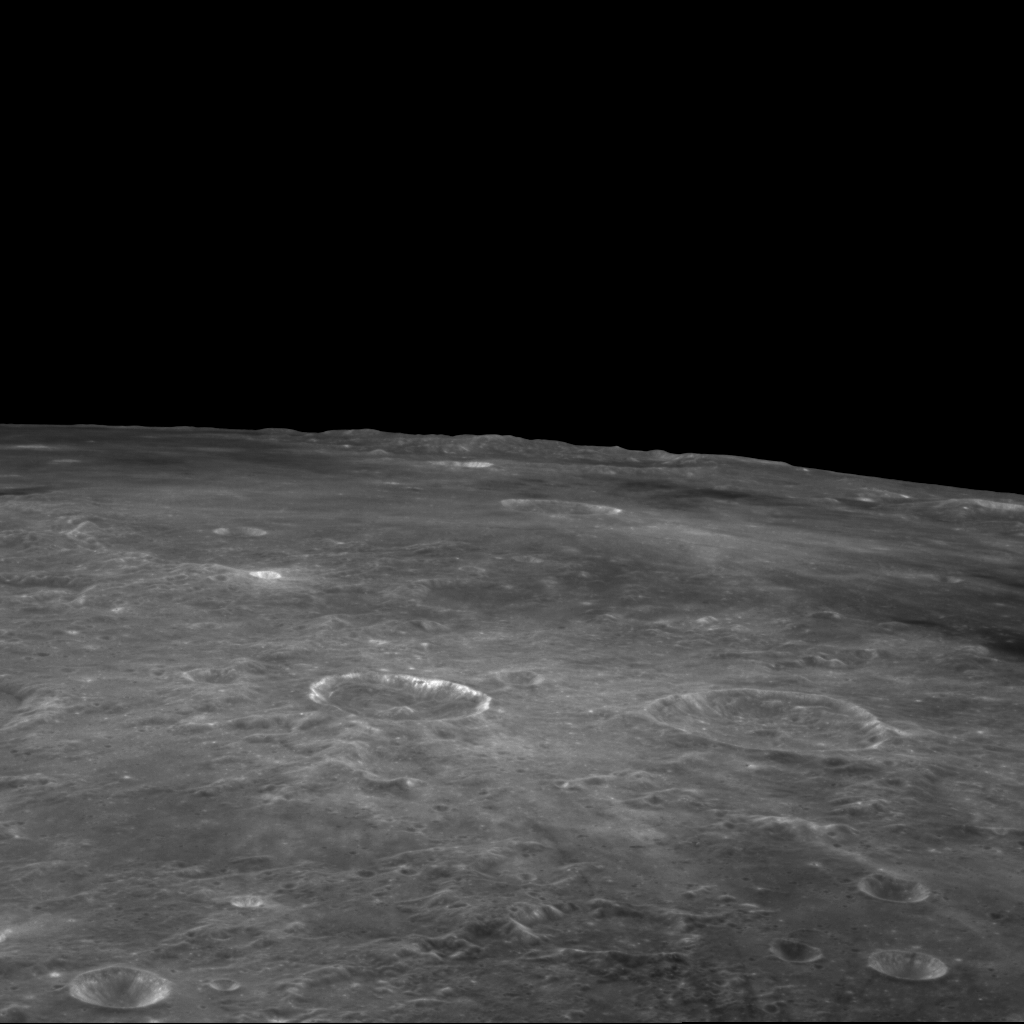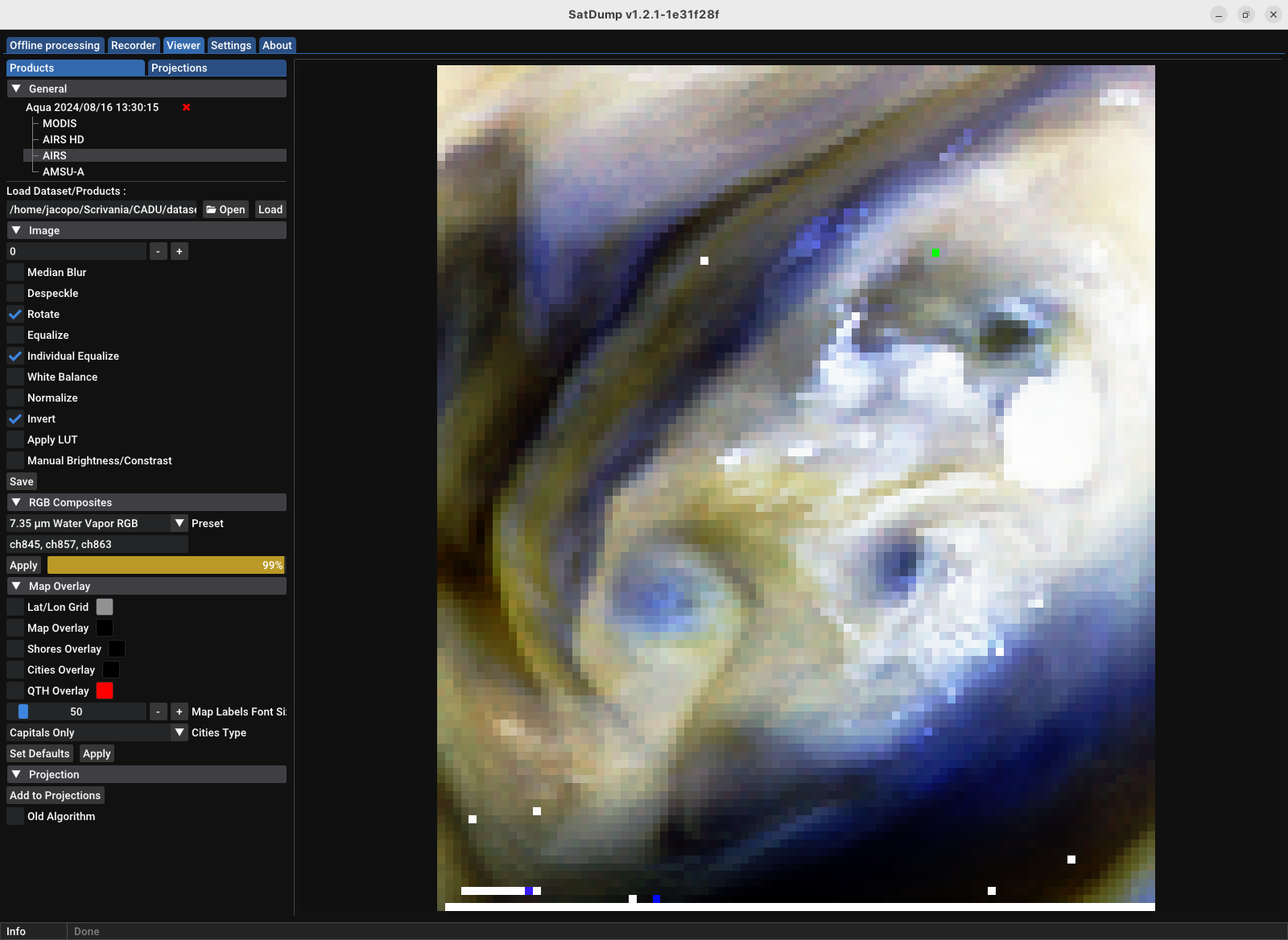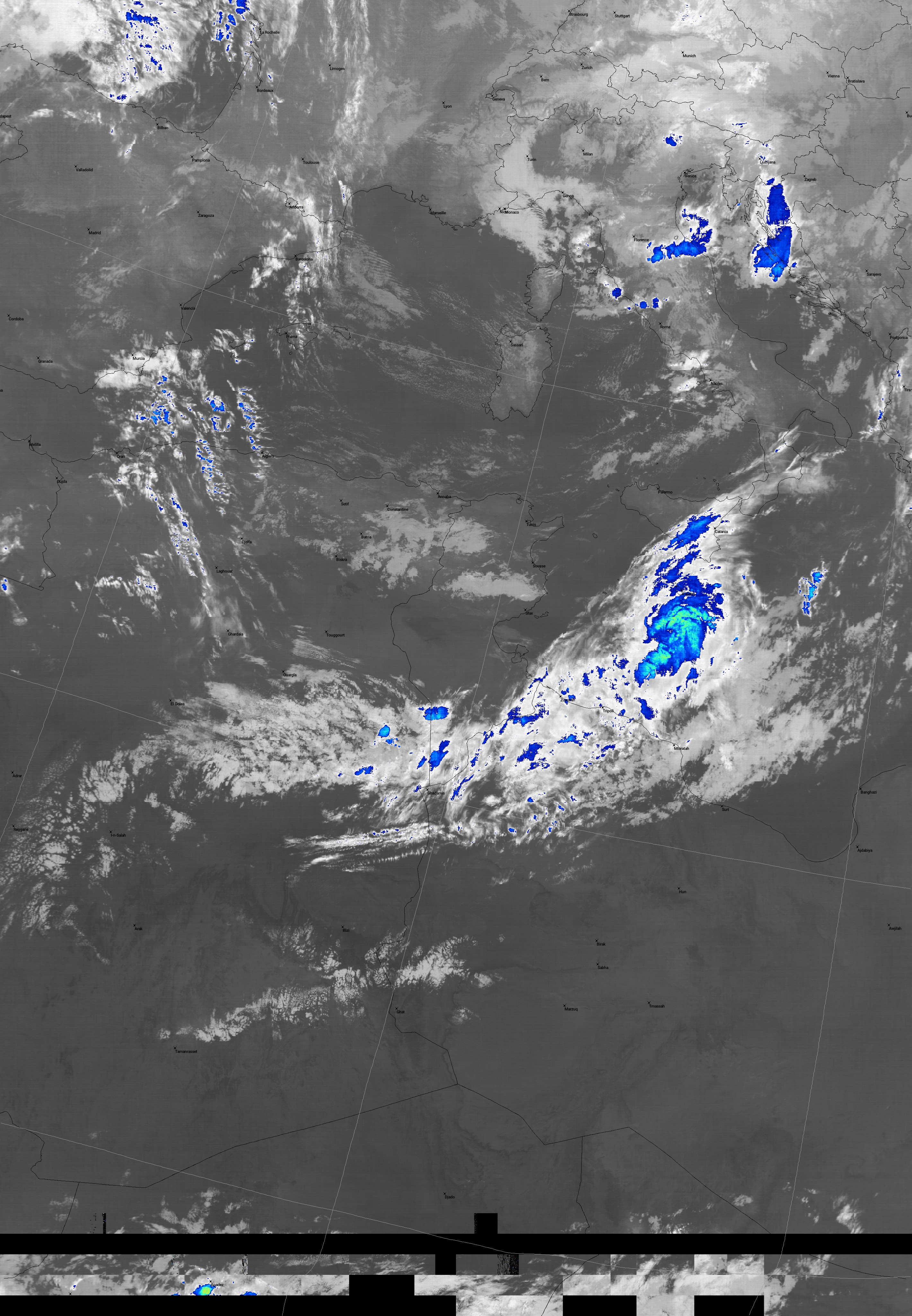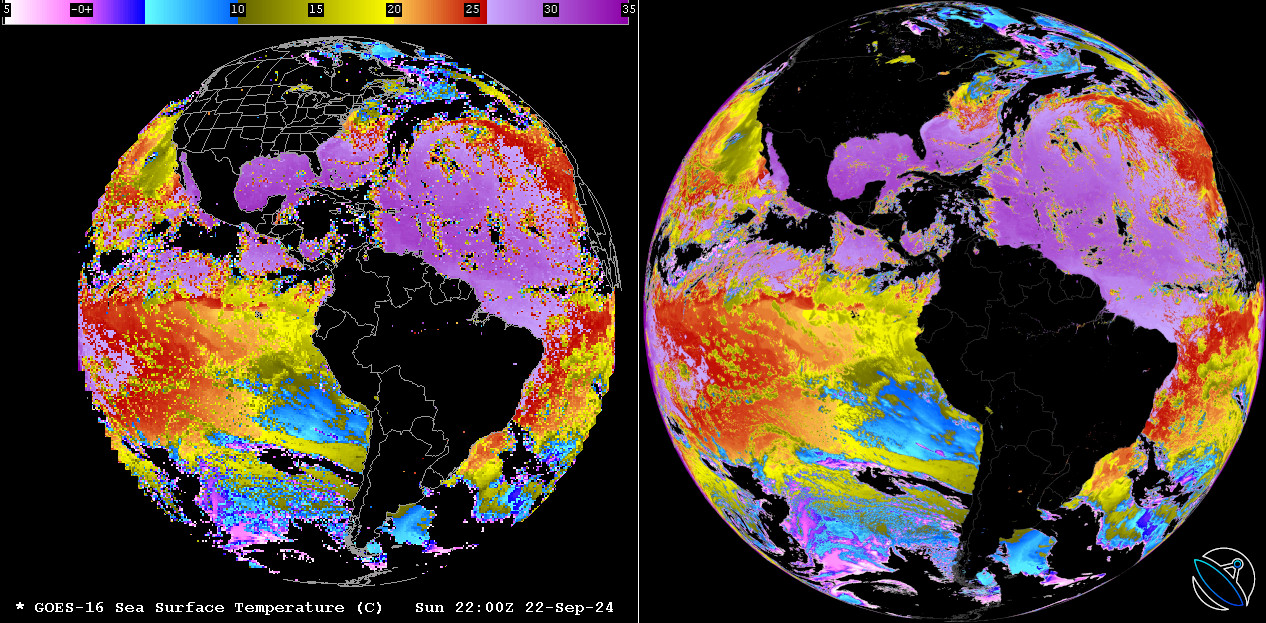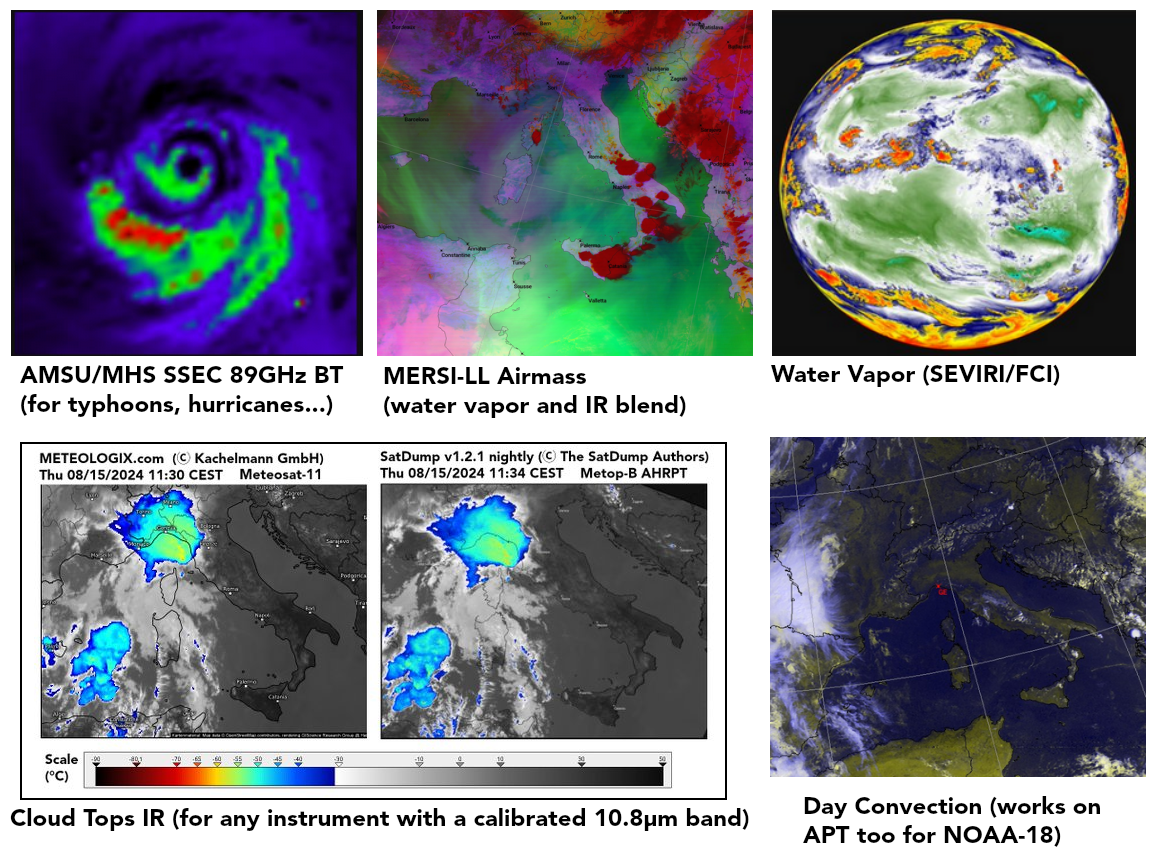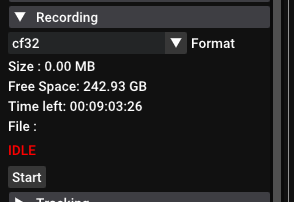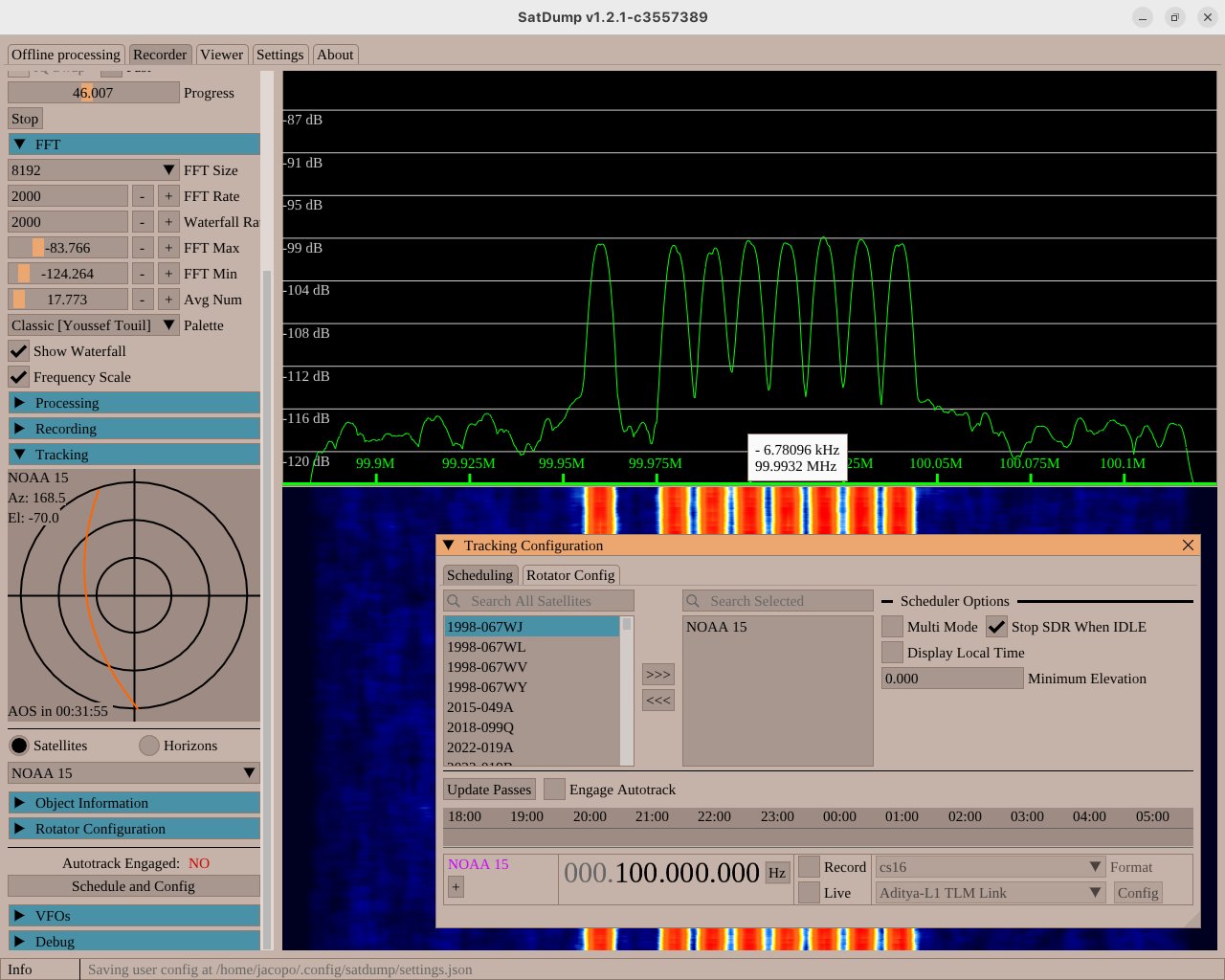Once again, what was supposed to be a quick wait before a new version has unfortunately turned a many months wait. But that’s done now and you’ll be able to enjoy these new features, and there are a lot of them!
New Features
Meteor-M Calibration Available
After a very long time and many struggles (including a very annoying language issue that kept us stuck for days - more on that later) we are very proud to announce infrared calibration for Meteor-M satellites on HRPT and LRPT.
This means that temperatures and radiances are now available from the infrared channels on MSU-MR, including all enhancements such as Cloud Top IR.
The reason why it took so long, was a mistranslation of the blackbody temperatures (there are two on MSU-MR) in the telemetry. The document we used called these values ACT, which as an abbreviation was a total mystery to us. It turned out that the C was in reality a Ch (Ч), and AЧT is the abbreviation of «Абсолютно чёрное тело» (Absolute Black Body), precisely what we needed! All that remained was to figure out how the values were encoded (during the process we discovered that for some reason Meteor-M N°2-2 values were lower by 40K, but otherwise identical, so we had to take that into account too). And that’s the story of calibration on Meteor!
EUMETSAT Archives (and EUMETCAST) Support: Metop, Meteosat, Sentinel-3 and more!
SatDump now fully supports most L1 products from the EUMETSAT archive, including brand new data from FCI (on Meteosat Third Generation-I1), data from Sentinel-3 OLCI and SLSTR, and last but not least also data from Metop such as AVHRR, AMSU, HIRS, IASI and MHS. More data types are also planned, such as KMSS and MSU-MR from Roscosmos’ archives as well as NOAA data!
Some users have reported success in opening EUMETCAST data into SatDump. This is experimental, but if you want to try it follow this message from Alex.
SEVIRI and FCI are also fully calibrated!
Archive Loader
We have built an Archive Loader right into SatDump! This feature allows you to seamlessly load data from EUMETSAT’s archive into the viewer. You just need to supply an EUMETSAT API key in the settings, specify an instrument and a date, and click Load.
The data can then be projected and processed like any other dataset in SatDump.
Opening and processing satellite data from EUMETSAT has never been easier before! A guide is also available.
Windows ARM64 Support
Jamie has implemented full Windows ARM64 support for SatDump. It will now run perfectly on laptops like the Snapdragon X. While most SDRs supported normally supported out-of-the-box also work in the ARM64 build, the LimeSDR, USRP, and Aaronia plugins are disabled due to compatibility issues.
ARM-based laptops will be more prevalent in the future and they are great lightweight machines for portable usage, such as APT on the mountains or other remote locations.
For more insights you can read these posts by Jamie himself.
JUICE Support
JUICE (JUpiter ICy moons Explorer) is an ESA probe tasked to study three of the Galilean moons of Jupiter, namely Ganymede, Callisto and Europa.
On August 20th, 2024 this probe performed an Earth flyby as part of a gravitational slingshot. Aang was able to decode its signals thanks to the Bochum observatory, and this yielded excellent pictures of the Moon during the flyby. For more information, see this post from him.
AIRS and CERES Support
The AIRS instrument is now fully supported (including projections), as is CERES. Both instruments are flown on the Aqua satellite, the first is a hyperspectral sounder (similar to IASI on Metop) and the second is a radiation budget instrument.
A calculator for AIRS channels is available here.
Arctic Weather Satellite Support
The brand-new Arctic Weather Satellite was finally launched and activated for a brief time by EUMETSAT specialists. During this brief activity (the satellite is still undergoing on-orbit tests) we were able to gather enough data to write a decoder with full support and some enhancements for its microwave radiometer.
AWS sports brand new 325 GHz microwave channels never seen before on a weather satellite. It is therefore expected for this satellite to have a strong contribution to science, and we want you all to be part of it, as it transmits on 1707 MHz with similar parameters to Metop!
IASI (imaging channel) Calibration
We’re not ready to announce full calibration for the entire IASI hyperspectral sounder as we’re still waiting for a few bits from EUMETSAT, but we can already calibrate its imaging channel.
This 10.8 µm thermal infrared channel sports the best resolution of any L band weather satellite, with its 800m/px at nadir (comparing to 1100m/px of AVHRR). It is therefore recommended to use IASI-IMG instead of AVHRR for enhancements that only use the 10.8 µm band, such as Cloud Tops Alert, Enhanced IR, and the classic NOAA enhancements.
GOES-R L2 Product Support
SatDump 1.2.0 brought about much improved support for many geostationary satellite downlinks - especially GOES-R HRIT. In 1.2.1, we’ve expanded on this by implementing initial support for GOES-R HRIT’s Level-II products! These products are pre-processed models from NOAA that include Rain Rate per Quarter Hour, Land Surface Temperature, Sea Surface Temperature, and more. For each type of L2 image, a LUT is provided intended to match those available in AWIPS/CAVE.
At this time, SatDump can do basic processing on these images, apply LUTs, and project them. However, full support for reading the calibration data from the Image data function header is not yet implemented, but it is planned. For now, LUTs have been provided that work with the standard ranges used for each L2 product.
GOME Fixes
We’re proud to announce that Metop satellites now have True Color* thanks to GOME!
GOME support has been there for a long time, but due to unclear documentation and a lack of interest its full potential was never realized. With these fixes, GOME is now usable with full swath (previously only half of the swath was visible) and with proper channel ordering. Also, support for projections was added.
There is still a lot to do with this instrument, but later improvements such as calibration unfortunately rely on data we are waiting to obtain from EUMETSAT. As soon as they send us the required data, we will restart work again.
*: some restrictions may apply ;)
Miscellaneous AVHRR and MHS Fixes
Zbychu added filtering for AVHRR and MHS, so calibration stripes and other strangeness is less likely to occur even if you have a bad signal.
Miscellaneous Composites
Many composites added by lego11 for a large number of instruments, and by Jamie for a small number of instruments. Here is a small selection:
Beware that Thermal Channel was renamed to 10.8 µm Thermal IR for consistency, so if you don’t find your thermal images try searching for the new name!
Automatic Filename Templating
Tired of manually writing filenames manually when saving your satellite images? Thanks to an idea by Cpt_Dingus which was then further refined by Jamie and Lego, SatDump now supports customizable filename templates.
Several template presets are included, with the option to make it truly yours thanks to extensive placeholders. Included templates are:
- Default: instrument name and composite/channel name (example:
avhrr_MCIR.png) - Detailed: instrument name, date, time, and composite/channel name (example:
avhrr_2024-05-27_22-15-17Z_MCIR.png) - Compact Detailed: date, time, satellite name and composite/channel name (example:
202405272215_NOAA-15_MCIR.png) - Satellite and Time: date and satellite name (example:
2024-05-27 2215 UTC - NOAA-15) - WMO: WMO compliant file naming (example:
Z_SATDUMP_C_----_20240527221517_NOAA-15_AVHRR_MCIR.png)
More Quality-of-Life Features
SatDump now supports several useful features that try to make its use easier:
- Added a toggle to disable or enable post-processing scripts.
- Right clicking twice on the image in the Viewer will center the view so the entire image fits - useful if you “get lost”!
- Added a free space calculator on the Recorder tab, with estimated time remaining depending on the recording settings and bandwidth used.
- Added a warning if an image larger than the free RAM is about to be generated in the Projection Viewer.
- Added more warnings if there are problems with OpenCL
- Added an option to use local time in the Scheduler instead of UTC
- Added config import/export in the scheduler to easily move your autotrack configs to another machine, or use from the CLI.
- RTL-SDR Manufacturer and Product names (from EEPROM) are now shown in the SDR selection dropdown. They can be set or changed with
rtl_eeprom
RFNM Support
Support has been added for RFNM SDRs! The RFNM plugin is currently built for Windows, macOS, and Linux.
Library Directory Fixes on Linux
Jamie has now implemented proper usage of the lib directory on various flavours of Linux. This fixed SatDump on Gentoo and OpenSUSE among others.
IMPORTANT: If you’re compiling SatDump manually on Linux, you should first run sudo make uninstall, then (and only then) do git pull and the rest of the usual commands. Otherwise, it could lead to some issues (that can be solved by deleting stray libsatdump_core.so files left on your system, e.g. by locating them with locate or find.)
If you’re on any other system, or you’re NOT compiling SatDump manually (e.g. using the deb archive), you do not need to worry about this!
Advanced Mode
A new setting is now available in SatDump: Advanced Mode! Once enabled under Settings > SatDump Interface, Advanced mode lets you change all TLE settings, composite configs, default pipeline settings, and more from the settings screen. You can even add new pipelines and composites as well.
When decoding a signal, either offline or live, you can also temporarily change all pipeline parameters to experiment with what works best for you. Be warned, though: by its very nature, there are no safeguards on this mode. Invalid inputs may result in a crash. Make sure all inputs are valid when using Advanced mode.
Themes
Several more themes for SatDump have been added by lego11 and Julia. Here’s a CDE Motif-like theme!
More Satellites Support
Robin OK9AWO has added initial support for XMM-Newton, VERONIKA and ACE.
Experimental Windows XP Support
What started as a silly idea by lego11 is now reality thanks to Jamie again!
A special verson of SatDump will now run on Windows XP SP3, and supports most of the features of the original SatDump. While we don’t endorse the usage of this version, it can still be useful to use that old laptop gathering dust as an automatic APT station.
Do note that this build is entirely unsupported and we will NOT fix bugs or other problems!
More infos on this thread. Releases are available here - GitHub account required. Make sure you install the Microsoft Visual C++ Redistributable from here.
Bugs Fixes
Winter is coming, and that means a death sentence for most of the bugs out there. That holds true for SatDump as well. Here’s a list of the most important ones:
- Fixed problems with MHS
- Retuned Meteor-M N°2-4, FengYun-3F and FengYun-3E projections
- GeoTIFF projections now work correctly
- Fixed bugs related to LimeSDR on Windows
- QTH Overlay config now works fine
- HackRF reated crashes were fixed
- Improved rotator widget and fixed a few crashes
- NASA’s Horizons was fixed (again)
- Several Android fixes
Statistics
- Number of commits named “Oops”: 23
- Number of commits insulting EUMETSAT for some reason: 5
- Number of commits asking for help because the author is held hostage by lego11: 1
- Number of commits where lego11 was forced to work on HIRS by Aang: also 1
Wrapping Up
As always, if you come across any bugs, feel free to open an issue on GitHub or reach out to us on Matrix! We encourage using one of these forms of communication instead of emailing SatDump team members directly, to help speed up issue resolution.

